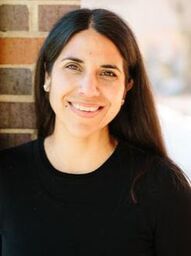 Amanda Rosas Amanda Rosas This is a guest blog post written by Liz Katz with Amanda Rosas --- Since the summer, many independent schools have been reckoning with their histories as predominantly white institutions. At One Schoolhouse, we know that we share this challenge--our staff does not yet reflect the diversity of race and identity in the United States. For us, as in many schools, taking on the crucial work of antiracism means recognizing that we have fallen short of representing the diversity of our student body, our schools, and our country, and working to remedy that inequity. As a supplemental school, we also have to consider how the work of equity and justice can be embodied in our mission to be a partner to schools in the process of transforming education. That means providing our schools with the courses they need to meet the needs of all their students. As a part of this work, we are excited to be adding Black Identity in the United States, and Latina/o/x Identity in the United States to our offerings in 2021-2022. Other initiatives are currently in progress and we look forward to sharing them over the course of the next few months. Amanda Rosas is a Mexican-American educator who will be teaching One Schoolhouse’s Latina/o/x Identity in the United States in Fall 2021; she currently teaches Gender and Sexual Identity in the United States and the Spring Activism Seminar at One Schoolhouse. At Visitation School in Mendota Heights, MN, she teaches Spanish and Social Studies and advises STAND, a student diversity and justice group. Rosas says that at most independent schools, “BIPOC students walk the hallways feeling like one of the few.” While independent schools have long supported presentations, student clubs and affinity groups focused on the experiences of students of color, they are also recognizing that these experiences can’t just be addressed as units or lessons. Most education in the United States inaccurately centers the privileges of whiteness, Christianity, and heterosexuality. It leaves all our students with an erroneous understanding of history and erases the experience of people of color, LGBTQ+ people, and non-Christian religious communities. Rosas observes, “When you put Black, Latinx, or LGBTQ+ history at the center of a course, you don’t have these historically dominant narratives [of whiteness] threatening to take over. You take away those distractions. If you really want to center the experience of these students and give them space, this is the way.” Course catalogs and curricula aren’t just an expression of how students spend the four years of high school. They are manifestations of a school’s values and priorities. That’s why the BIPOC experience needs to be both accurately represented and visible in the course catalog. Rosas reflects, “It’s powerful to see yourself represented in a course.” The self-determination, resistance, and contributions of individuals and communities who share their identity provide students with essential windows and mirrors. “You see people who are like you, people who have fought for you. You see that justice and hope are things that can happen for people who are like you.” Students need courses that accurately reflect the complexities of identity and race in the United States. For many schools, creating these courses is part of an initiative that includes gathering information, evaluating material, and recruiting teachers. All of these are rightly time-intensive processes, but there are students in schools who need access now--two years isn’t a long time in the history of a school, but it’s an eon to a sixteen-year-old. To ensure that students can access a course of study that recognizes their needs, and as part of our mission to partner with schools, we’ve committed to expanding our catalog and offering courses that reflect the range of students and experiences in our schools. A course catalog that gives equal weight to the experience of communities of color is a reflection of a school’s commitment not only to its students of color but also the work of dismantling racism and bias. Amanda Rosas saw the impact of identity-based courses in her Gender and Sexual Identity course first-hand: “[Student] saw that she could embrace her LGBTQ identity and take action to create a more inclusive environment at her school. It positioned her to see the world through a lens of justice...Bringing this aspect of self-love into your education is radical.” At One Schoolhouse, we want to partner with schools to provide courses that give students access to that kind of transformative experience.
0 Comments
Leave a Reply. |
Don't miss our weekly blog posts by joining our newsletter mailing list below:AuthorsBrad Rathgeber (he/him/his) Archives
July 2024
Categories |

 RSS Feed
RSS Feed